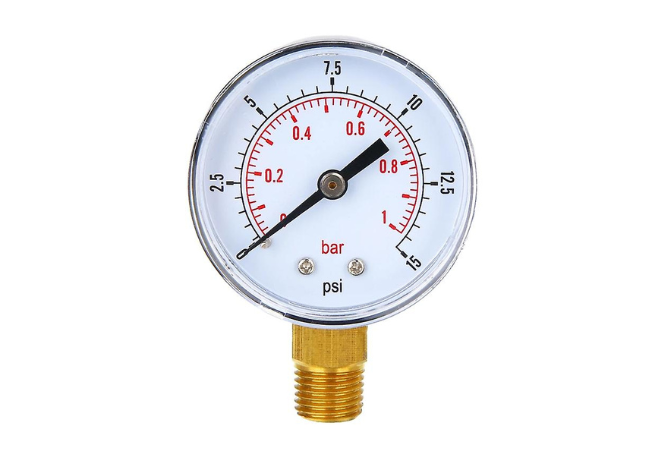Why Should Professionals Use Cable Rods for Modern Installations?
Cable rods may seem like a simple accessory, but they are one of the most valuable tools when working with electrical, data, or AV cables. From domestic setups to complex commercial infrastructure, these rods allow professionals to navigate walls, ceilings, and floor voids without hassle. Let’s dive into how cable rods elevate efficiency, ensure safety, and adapt to today’s demanding installation environments.
Understanding the Purpose of Cable Rods
Cable rods are slender, elongated tools designed for routing cables through confined or obstructed spaces. Their main function is to guide cables through walls, conduit systems, ducts, or trunking that would otherwise be difficult to access manually. These tools are typically made from fibreglass, polypropylene, or nylon and can vary in rigidity, diameter, and length to suit different use cases.
The Practical Applications of Cable Rods
Whether you're installing LED lighting, Ethernet cables, thermal sensors, or connectors, cable rods provide a versatile solution that eliminates the need to tear down structures just to pass a wire through.
- Electrical contractors use them to wire sockets and switches during property rewiring.
- Network engineers use them in false ceilings or raised floors for routing microcontroller or communication cables.
- Maintenance teams rely on them to perform safe inspections and retrofits in pre-built environments like data centers or warehouses.
Variants and Types of Cable Rods in the Market
The diversity of cable rod types reflects the wide range of tasks they’re used for. Some are flexible enough to snake through tight corners, while others are rigid to push cables longer distances.
- Standard fibreglass rods balance strength with moderate flexibility for everyday routing tasks.
- Nylon rods are more pliable and help in guiding cables around tight bends or curves.
- Glow-in-the-dark or illuminated rods help navigate through dark wall cavities or underfloor voids.
- Tapered rods or bullet-tip rods reduce snagging and improve handling when moving cables through cluttered or debris-filled areas.
Key Attachments That Enhance Cable Rod Usage
Modern cable rod kits come with multiple tips and attachments that allow professionals to solve a wide variety of routing challenges with minimal tools.
- Hook heads can grab onto loose wires or pull loops through.
- Magnet tips assist in retrieving metallic objects accidentally dropped inside ducts.
- Eyelet ends allow cables to be securely tied and pulled without slipping.
- Flexi-leads increase steering control when maneuvering the rod through sharp bends or corners.
Advantages of Cable Rods in Complex Environments
In high-pressure environments like industrial plants, smart home installations, or construction sites, cable rods become more than just a helpful tool—they become essential.
- They reduce installation time significantly, especially for large-scale projects with multiple cable runs.
- The reduced need to drill or cut through structures helps avoid safety hazards.
- By using rods, installers maintain the structural integrity of walls or ceilings, especially in historic or delicate buildings.
- Professionals can complete jobs faster without compromising quality or safety.
Choosing the Right Cable Rod for Your Project
Every project requires a different type of rod depending on the cable weight, space constraints, and cable type (e.g., microprocessors, laptops, thermal pads, or fuses). Selecting the right rod ensures smoother operation and less physical strain.
- Use flexible rods for jobs involving complex curves like behind entertainment walls or underfloor heating systems.
- Select rigid rods for longer, straight cable runs such as attic-to-basement installations.
- Consider rod length—short rods for local applications and long ones for spanning multiple rooms or floors.
Durability and Maintenance of Cable Rods
Cable rods are known for their longevity, but proper care increases their performance lifespan.
- Clean rods after every use to remove dust and debris that may reduce their flexibility or add weight.
- Store rods in their protective tube or case to prevent warping or cracking.
- Check thread connectors regularly to ensure a secure fit during assembly and use.
Evolving Trends in Cable Routing Solutions
The demand for intelligent homes and connected buildings has driven innovation in cable routing tools. Modern cable rods are now integrated with smart features that address common user pain points.
- Some kits include torque-resistant joints for better control in tight angles.
- Rods with textured surfaces offer enhanced grip, especially when working in sweaty or gloved hands.
- LED-lit rod ends improve visibility in crawlspaces and voids, eliminating the need for separate lighting equipment.
- Eco-conscious options made from recycled materials are gaining popularity in sustainable construction projects.
Safety Considerations When Using Cable Rods
Like all tools, cable rods should be handled with care to avoid property damage or personal injury.
- Avoid forcing rods through hard obstructions; this can cause them to snap or splinter.
- Use insulated rods when working near live circuits to prevent electrical hazards.
- When using extension rods, ensure joints are tightly secured to avoid separation inside wall cavities.
- Use a cable lubricant if needed, but only when the rod type and installation space are compatible.
Conclusion: A Must-Have Tool for Efficient Cable Management
In today’s world where electrical and electronic infrastructure is only growing more complex, cable rods have become essential for smart, efficient, and professional-grade cable installations. From thermal cables and connectors to LEDs, capacitors, and switches, every application benefits from the precision and reliability that cable rods deliver.
Whether you’re a seasoned electrician, a network technician, or a DIY enthusiast, investing in a quality cable rod kit ensures that your cable management tasks are easier, faster, and safer.




Comments
Post a Comment